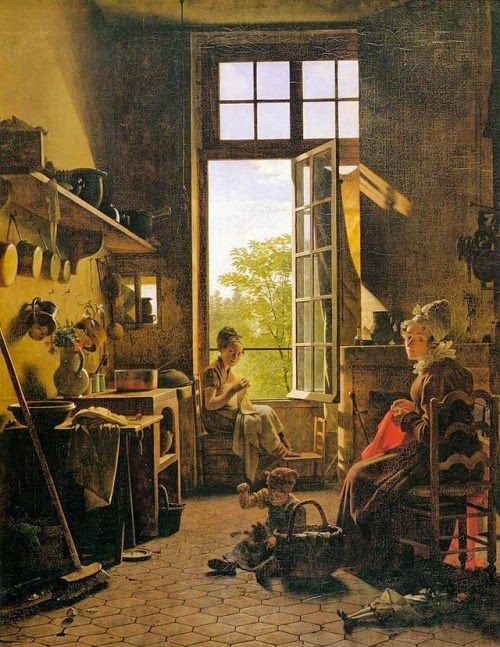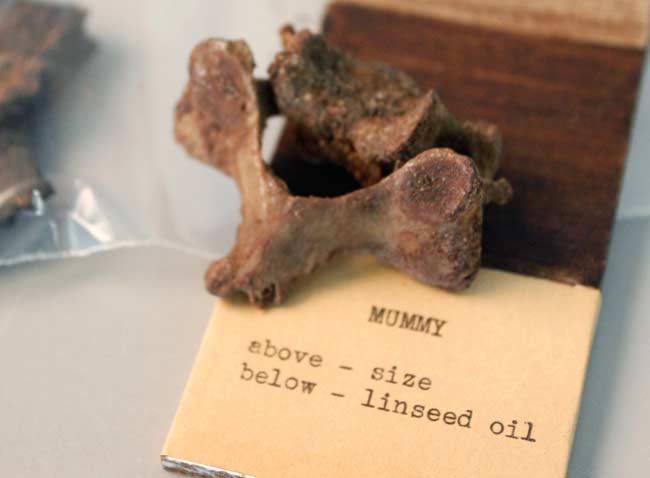Posted by Curry S. on Jan 28th 2020
Pigment Series Part III: Asphaltum a.k.a. Egyptian/Mummy Brown
The third color in our pigment series! Do you know where your favorite color comes from? You might be surprised at what you find. Here we'll explore the pigment Asphaltum a.k.a. Egyptian/Mummy Brown. You won't believe where (or what) this pigment comes from.

Martin Drölling, L’intérieur d’une cuisine, 1815, oil on canvas, Louvre.
During the early 16th century a pigment called “mummy brown” made its way onto European artists’ palettes. Use of this pigment peaked during the 18th century and can be found mostly in Pre-Raphaelite British paintings. Without a close look at the ingredients, many artists were oblivious to the fact that this pigment was literally made out of Egyptian mummies, both human and animal. Discovery of this unethical pigment quickly gained attention and, in an effort to put a stop to it, the press made sure to influence the public opinion by condemning the practice.

Fragments of mummy used in making mummy brown pigment, donated by C. Roberson, with paint sample. Forbes Pigment Collection, Harvard Art Museums, Straus 695. Photo: R. Leopoldina Torres.
Mummy brown was unique as a pigment not only because of its origin but also because of the color. Unlike other pigments that are derived from organic sources like a singular plant or mineral, mummy brown was as unique as the person (or animal) it came from. Other factors to take into consideration were the region the mummy came from, the time of their burial, and what chemical or organic components may have been used during the mummification process and burial. Needless to say, there was not just one recipe discovered for this pigment. While some called for a specific body part like the muscles, others made use of the whole mummy. Regardless, the end result was often a brown pigment similar to raw and burnt umber. The pigment was regarded for its transparency.

Tube of mummy brown pigment from Roberson and Co. (Harvard Art Museums)
Disappointingly, the practice did not end until it was discontinued in 1964. Even more disappointing, the only reason for its end being that manufacturers began to run out of the pigment a.k.a., they were running out of mummies. These days mummy brown still exists but is made of 0% human remains and goes by a different name, “asphaltum.” Asphaltum is made up of a few different pigments, depending on the paint manufacturer, as each has their own take on this pigment.

Eugène Delacroix, Liberty Leading the People, 1830, oil on canvas, Louvre.

